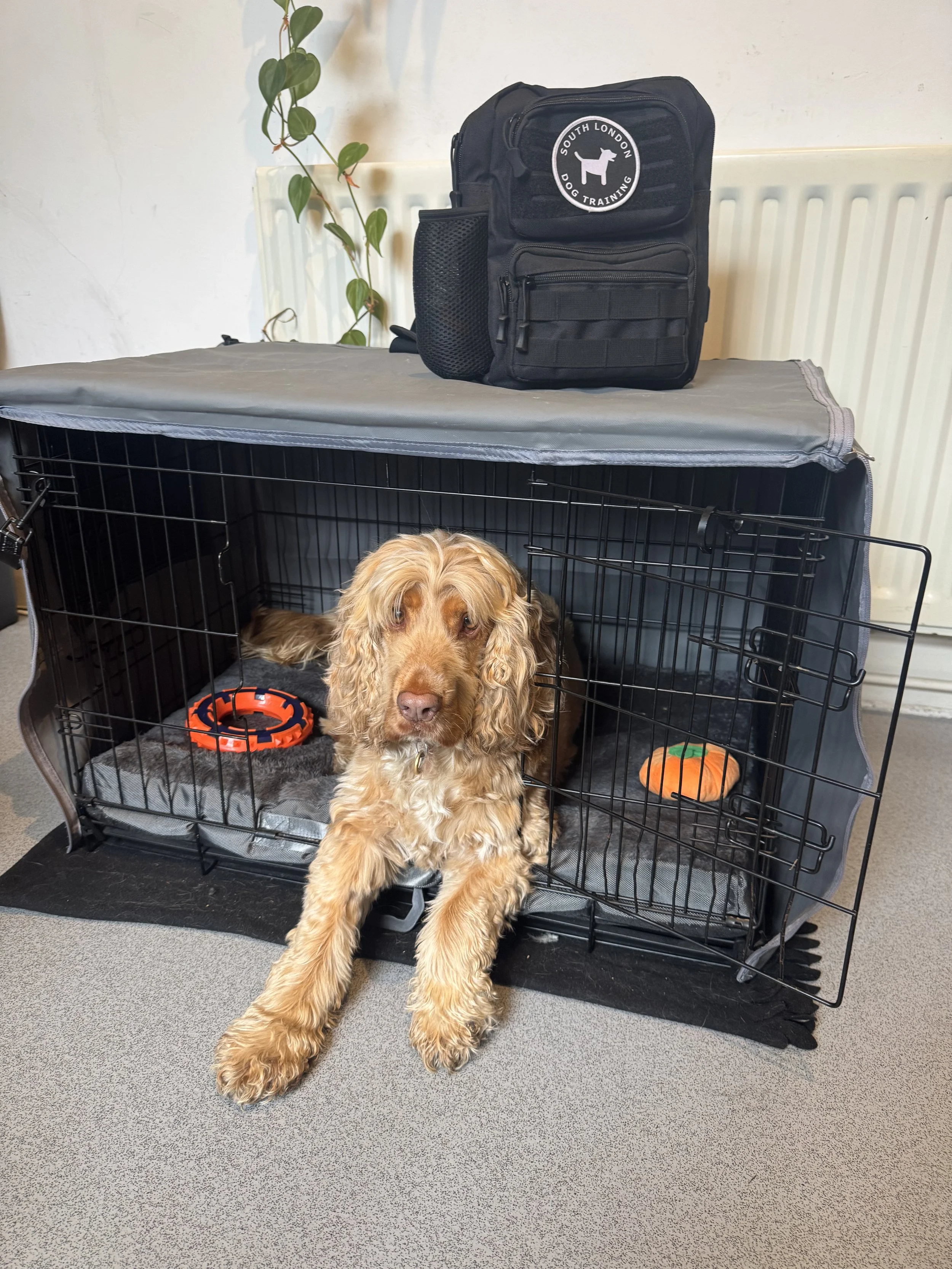How to Crate Train a Puppy or Dog: Step-by-Step Guide & Benefits
Crate training is one of the most valuable skills you can teach your puppy or dog. Far from being a ‘cage’, a crate is really a safe den where your dog can rest, relax, and recharge. Think of it as their bedroom—a personal space that helps them feel secure and gives you peace of mind.
Crate Training a Puppy
Starting with a puppy is usually the easiest because they’re learning everything for the first time. The key is to make the crate a happy, positive place. Choose the right size: big enough for your pup to stand, turn around, and lie down, but not so large that they can toilet in one corner and sleep in another.
Begin by leaving the door open and encouraging your puppy to explore. Throw in a treat, a favorite toy, or even feed their meals inside the crate. Praise them warmly whenever they step in on their own. Once they’re comfortable, you can close the door for short periods, gradually increasing the time as they get used to it.
At night, keep the crate close to your bed so your puppy knows you’re nearby. Expect some whimpering at first—this is normal. Take them out for toilet breaks as needed, and return them calmly to the crate. With consistency, they’ll soon be snoozing peacefully through the night. You can then move the crate to another room like the kitchen.
Crate Training an Older Dog
Older dogs can absolutely learn to love a crate, even if they’ve never used one before. The process is similar: go slowly, use positive reinforcement, and never force them inside. Make the crate inviting with soft bedding, tasty treats, and plenty of encouragement.
If your dog has been rescued or struggles with anxiety, the crate can become a comforting retreat. Just remember: the crate is never a punishment. It should always feel like a safe, cosy spot they choose to go to.
Why Crate Training is Worth It
Crate training comes with plenty of benefits for both dogs and owners:
Helps with House Training – Puppies don’t like to soil where they sleep, which makes the crate a fantastic aid in teaching them good toilet habits.
Keeps Them Safe – A crate stops curious pups from chewing shoes, wires, or anything dangerous when you’re not around.
Provides Comfort – Dogs are natural den animals. A crate offers them a calm, quiet retreat when the world feels overwhelming.
Makes Travel Easier – Whether it’s car rides, vet visits, or boarding, a crate-trained dog feels more secure in new environments.
Encourages Better Behavior – Structure and clear boundaries help reduce chewing, barking, and anxiety.
Can be useful to contain your dog if you have contractors over or just need your dog safe for any reason.
Final Thoughts
Crate training isn’t about locking your dog away—it’s about giving them a safe space where they can feel happy and secure. With patience, consistency, and lots of praise, your dog will learn to see their crate as a comfort, not a confinement. And as an owner, you’ll appreciate the safety, structure, and freedom it brings to both your lives.
Looking for help with crate training or puppy obedience? I offer complete training support, from foundational advice to hands-on in-home visits. Together, we'll evaluate your space and design a setup perfectly suited to your dog's needs and your household—maximizing your chances for success.

